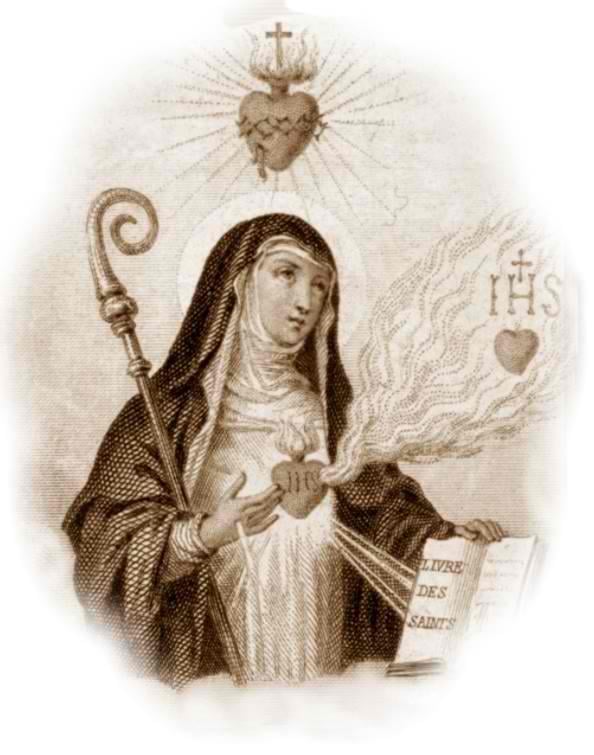
Today, November 16, is the memorial of Saint Gertrude the Great.
Gertrude was born in 1256 in Thuringia within the Holy Roman Empire. At age four (some reports say five), she was raised in the monastery school of Saint Mary of Helfta. She was described as an extremely bright and dedicated student, she excelled in literature and philosophy, and when she was old enough, became a Benedictine nun.
In her mid-20s, Gertrude received her first vision that would continue throughout her life. In a vision, Christ scolded her for being too concerned with secular things. Since then, her focus was toward scripture and theology. She studied the works of the Church Fathers. Gertrude received other visions and mystical instruction, which formed the basis of her writings. She helped spread early devotion to the Sacred Heart of Jesus.
Gertrude was a prolific writer. Sadly, only a few of her many writings survived. Her most famous work is the “Legatus Memorialis Abundantiae Divinae Pietatis” or “The Herald of Divine Love.” This writing was praised by many saints, particularly by St. Teresa of Avila (her confessor Francisco Ribera recommended that St. Teresa should take St. Gertrude as her spiritual guide) and St. Francis de Sales, and continues to be printed today.
She is also invoked for suffering souls in purgatory. The following prayer is attributed to St. Gertrude:
“Eternal Father, I offer You the most precious blood of thy Divine Son, Jesus, in union with the Masses said throughout the world today, for all the Holy Souls in Purgatory, for sinners everywhere, for sinners in the universal church, for those in my own home and in my family. Amen.”
She died in 1302 at the age of around 46. She was never formally canonized. However, Gertrude was equipollently or equivalently canonized in 1677 by Blessed Pope Innocent XI. It was Pope Benedict XIV who gave her the title “the Great” to distinguish her from her namesake, Abbess Gertrude of Hackeborn.